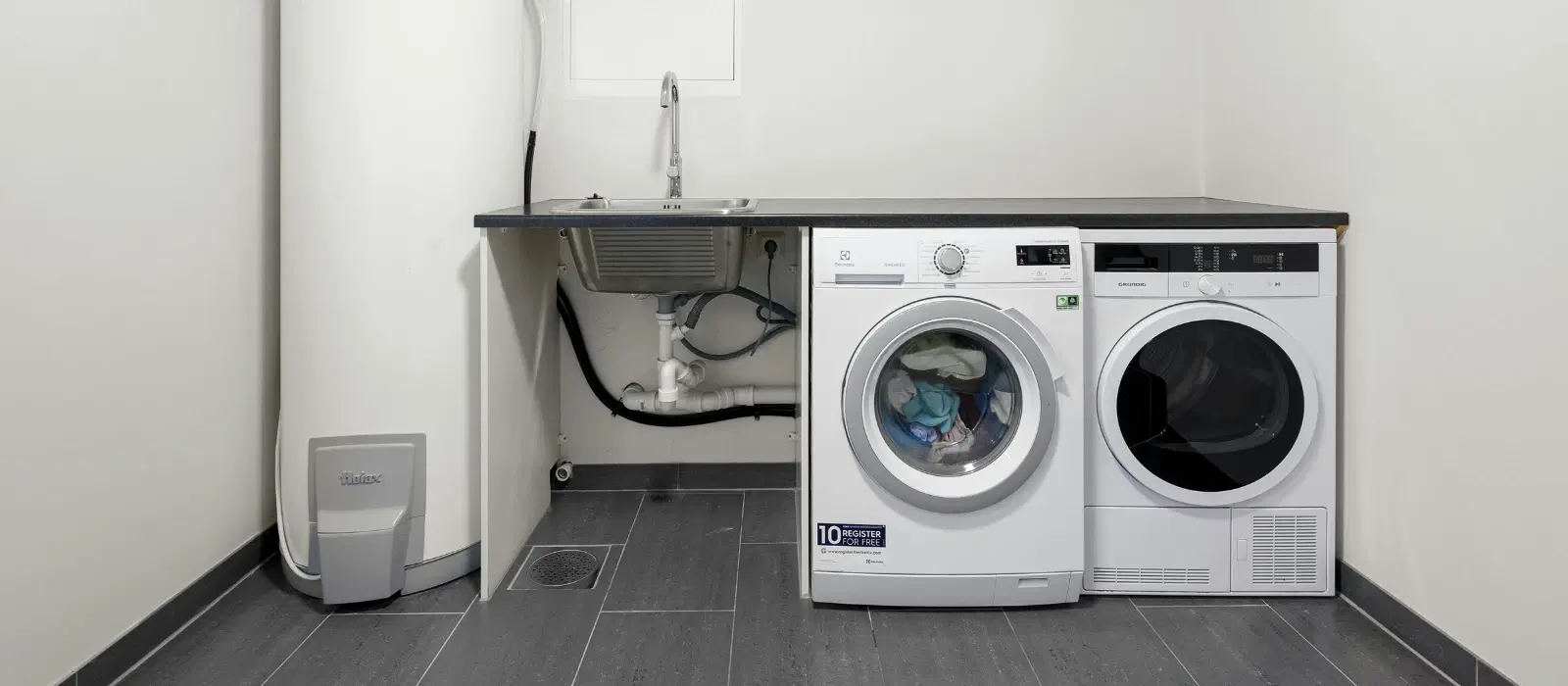
Consumer Electronics
•04 min read
You load up your washing machine, press start, and wait for the spin cycle—but nothing happens. It’s a frustrating experience that many homeowners struggle with. When you shop on Tata Neu, you earn NeuCoins on every purchase along with benefits like Express Delivery for orders placed before 6PM. Understanding why your washing machine is not spinning can save you time, money, and unnecessary inconvenience.
The spin cycle is designed to remove excess water from your clothes, utilising the drum, motor, and drainage system efficiently. While the drum rotates rapidly, the motor powers the process, and the drainage system ensures water is quickly expelled.
If your washing machine is showing issues such as the drum not rotating, producing unusual noises, or leaving clothes overly wet at the end of a cycle, these are clear signs of a spin problem. Recognising these warning signs early can prevent further damage. Addressing these issues promptly reduces the risk of more complicated malfunctions down the line.
One of the most frequent causes of a non-spinning washer is simply overloading the machine. When there are too many garments, the drum cannot rotate as it should, leading to an imbalance. To avoid this, ensure you’re using appropriate load sizes and redistribute the clothes to maintain balance.
Even when not overloaded, unevenly distributed laundry can significantly affect the spin cycle. When clothes bunch up on one side, the imbalance causes the washing machine not to spin properly. Adjusting the load by rearranging the items can often restore the correct spinning action.
Many washers are equipped with safety features such as a lid switch or door lock that prevent the machine from spinning if they’re not secured properly. If these components are broken or poorly aligned, the washer will refuse to start the spin cycle. Checking these mechanisms and repairing or replacing them can help resolve the issue.
A blocked drainage system, such as a clogged drain pump or hose, can also lead to a washing machine that isn’t rotating as it should. Without a clear path for water to exit, the machine halts the spin cycle. Regular inspection and cleaning of the entire drainage system is a practical step to ensure smooth operation.
If the drive belt is worn out or the motor fails, the drum simply won’t spin. A broken belt can cause the drum to struggle under load, and if the motor is malfunctioning, it cannot provide the necessary force. It’s advisable to examine the belt’s condition and, if you suspect motor problems, to seek professional repair help.
Before diving into repairs, ensure that your washer is level and set on a stable surface. Frequently, a level machine can prevent many spin cycle issues. Additionally, check the washer’s display for any error codes; these can provide clues or indicate a specific malfunction. Always consult your washing machine’s manual for model-specific error codes to ensure accurate troubleshooting.
Sometimes, a simple reorganisation can solve the problem. If your washing machine is not rotating correctly, redistributing the load to balance the clothing can immediately fix the issue. Cleaning the drain pump and hoses is another straightforward fix for drainage blockages, while inspecting the drive belt might reveal whether it is time for a replacement.
If you’ve checked the basics and are still experiencing problems—especially with the motor or complex control board issues—it might be time to seek professional advice. Reliable appliance repair technicians can offer a holistic solution, ensuring that your washing machine is back to optimal performance quickly and safely. Plus, Tata Neu’s reliable support ensures you always have expert advice when you need it.
A little regular maintenance can go a long way. Clean the drum and drain filter periodically and inspect hoses and belts for any damage or wear. A well-maintained washing machine is less likely to experience spin cycle disruptions.
Adopting habits such as avoiding overloading or underloading the drum and using the right amount of detergent can prevent many spin issues. Careful use ensures that your appliance remains efficient, minimising the risk of malfunction due to imbalances or build-ups.
Pro Tip: Extend Your Washer’s Lifespan
Did you know? Balancing your laundry loads not only prevents spin cycle issues but also reduces wear and tear on your washing machine’s motor and drum. Plus, Tata Neu’s reliable support ensures you always have expert advice when you need it. A little care goes a long way in keeping your washer running smoothly!
This could be due to an imbalanced load, a faulty lid switch, or a clogged drainage system. Start by redistributing your laundry and checking for blockages.
A broken drive belt, motor issue, or overloaded drum are common reasons. Inspect the belt and motor, or lighten the load.
This may indicate a problem with the motor or a faulty lid switch. Check the lid switch mechanism and consult a professional if needed. You can also explore solutions for fixing washing machine spin issues specific to your model.
Washing one item can cause an imbalance in the drum, preventing it from spinning. Add a few more items to balance the load.
Start by cleaning the drain pump and hoses to remove blockages. If the issue persists, inspect the drive belt for damage.
This discussion on why washing machine is not spinning highlights several common causes along with practical troubleshooting steps. By understanding washing machine spin cycle issues and recognising early signs of trouble, you can take action to fix the problem before it escalates. Regular maintenance and best practice usage play a crucial role in ensuring a longer lifespan for your appliance along with a reliable performance. With clear insights into reasons washing machine won't spin and simple guidance on fixing washing machine spin issues, you’ll be better prepared to tackle these issues yourself or determine when professional help is really warranted.